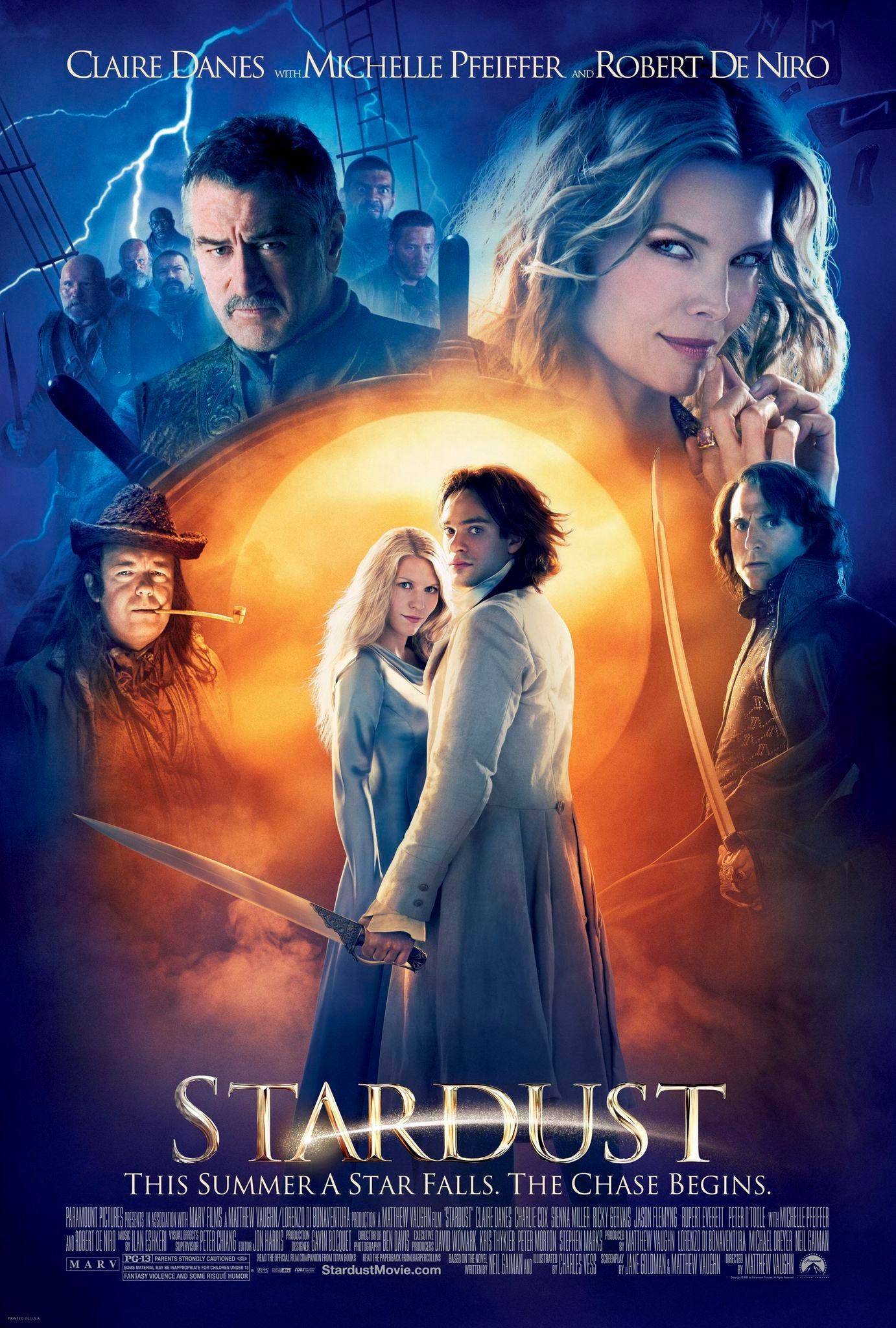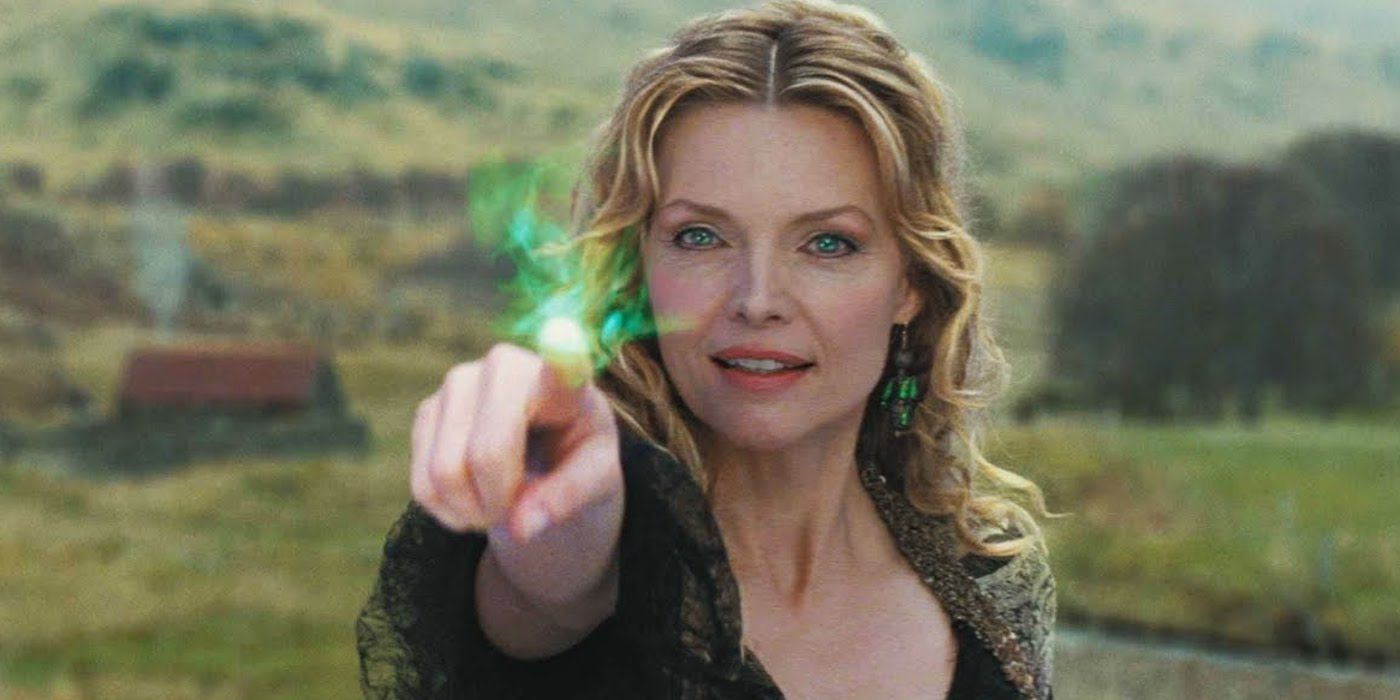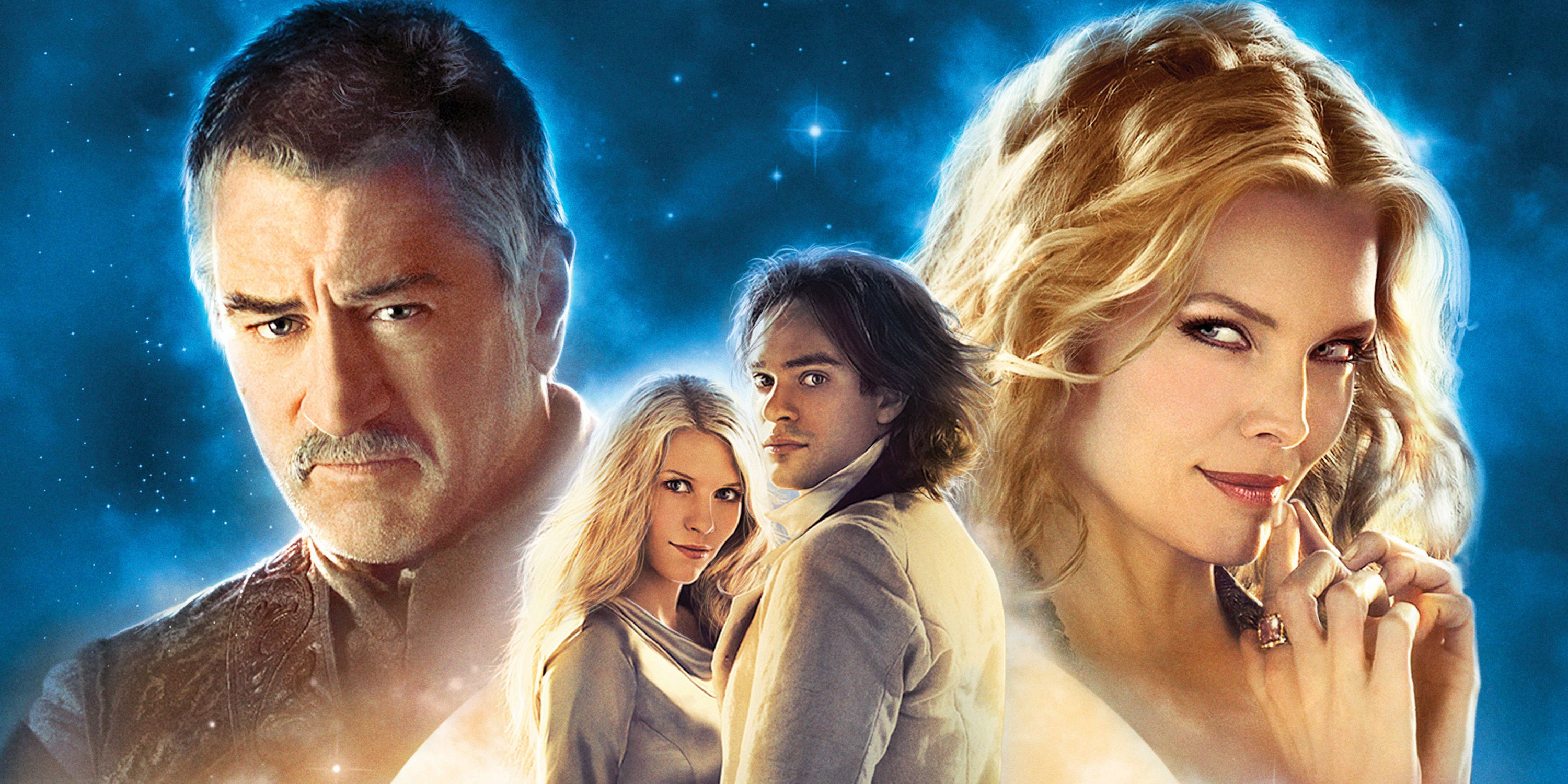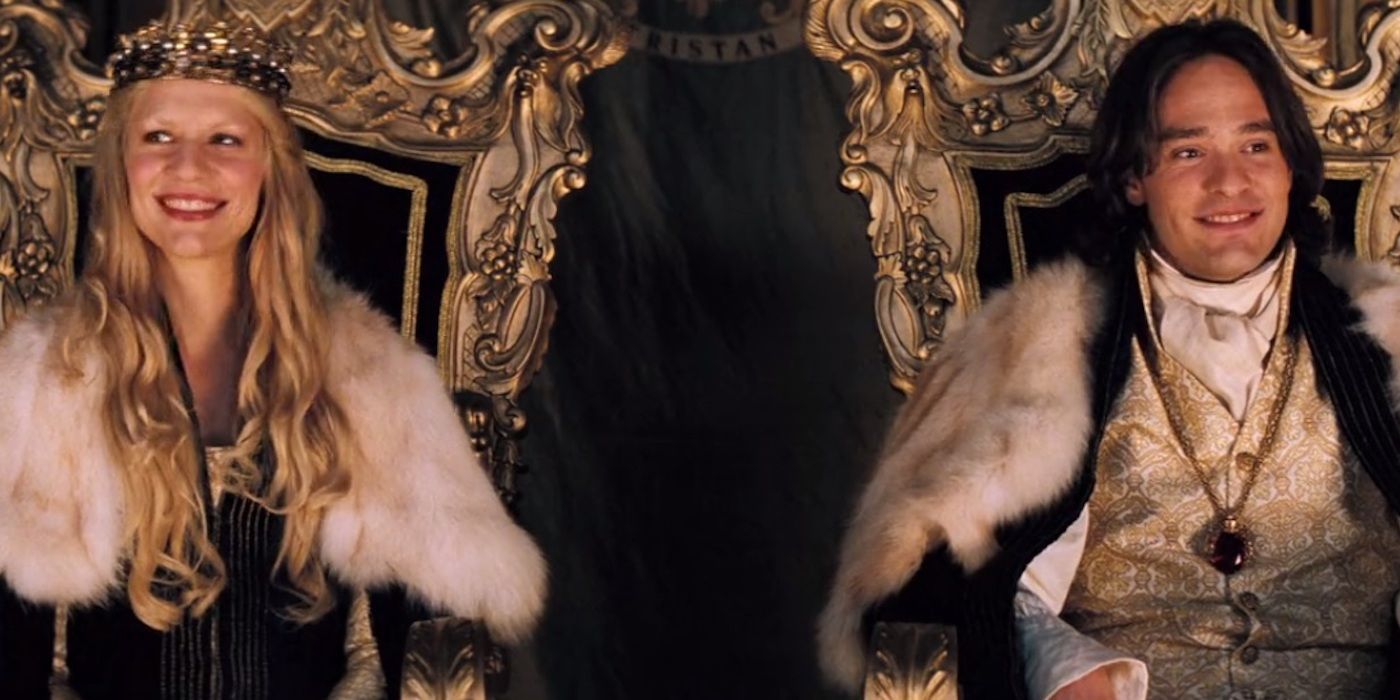The Big Picture
- Stardust by Neil Gaiman blends classic fairy tale elements with dark themes and mature content for a unique fantasy experience.
- While the adaptation stays faithful to the book, changes in the movie's third act offer a chance to compare and contrast different storytelling mediums.
- The book's ending focuses more on complex emotions and character development, while the film favors action and simplification of certain characters.
After driving past a crumbling wall one day and seeing a shooting star fly across the sky on another, English author Neil Gaiman was inspired to write a book called Stardust. Unlike some of his other famous works, like Coraline and American Gods, Stardust plays out more like a classical fairytale, taking place in a world where humans and fairies are separated by a crumbling wall with a hole in it. The plot follows a half-faerie named Tristran Thorn as he travels into the land of the faeries to recover a falling star for the girl he intends to marry. The journey home proves to be quite difficult, however: not only has the star taken the form of a human woman named Yvain, but numerous other factions are after her, including a trio of witches who want to eat her heart to regain their youth, and the heirs to the kingdom of Stormhold, who can only become king if one of them claims the gemstone that knocked Yvain from the sky.
Fitting with the darker themes of Gaiman's other works, Stardust feels more like a Brothers Grim fairytale than a Disney one. It has plenty of whimsical adventures and magical moments, to be sure, but also lots of murder, horrible curses, sex, and mature themes. This helps to give it a unique identity as it blends old and new elements of the fantasy genre. In 2007, an adaptation was made by Paramount Pictures, directed by Matthew Vaughn, with Claire Danes as Yvain and Charlie Cox as Tristran, re-named Tristan for the film. Aside from toning down some of the darker elements of the book, it's a very faithful adaptation, thanks in large part to Gaiman being pretty involved with the production, making it a must-watch for 2000s fantasy fans.
Despite this, the film drastically changes the third act, to the point where it's unrecognizable from Gaiman's original work. This isn't inherently bad: often in the adaptation process, things need to be cut or streamlined, as films just don't have the same amount of time to dedicate to plot and characters as novels do. With the rest of the movie being so faithful to the novel, the changes to the third act offer a unique chance to compare and contrast how fairytale books and films can handle their climaxes, as well as show the strengths and weaknesses of the two mediums.

Stardust
- Release Date
- August 10, 2007
- Director
- Matthew Vaughn
- Cast
- Charlie Cox , Claire Danes , Robert De Niro , Sienna Miller , Mark Strong , Ian McKellen
- Runtime
- 127 minutes
What Happens at the End of the Movie Adaptation of 'Stardust'?
In the movie, after finally returning to the human village of Wall, Tristan takes a lock of Yvain's hair to his crush, Victoria (Sienna Miller). He tells her to get over herself, having come to realize his feelings for Yvain. However, he discovers that her hair has turned to dust upon entering the human world, and rushes to stop her from crossing over after him. By the time he arrives, Yvain and his faerie mother, Una (Kate Magowan), have been taken by the witch queen, Lamia (Michelle Pfeiffer). Tristan tracks her down to the house she shares with her younger sisters, Mormo (Joanna Scanlan) and Empusa (Sarah Alexander), as they prepare to sacrifice Yvain. He runs into the final prince of Stormhold, Septimus (Mark Strong), who has come to take revenge on Lamia for the death of his brother, Primus (Jason Flemyng). The two decide to join forces against the witches.
Working together, Tristan and Septimus kill Mormo and Empusa, but Lamia uses a clay doll to torture Septimus before drowning him, then puppets his corpse to duel with Tristan. When Tristan wins, Lamia fakes defeat to get him to lower his guard, before attacking him and Yvain. However, Yvain's love for Tristan causes her to glow so bright that Lamia is incinerated. Afterward, Una reveals that she is the long-lost princess of Stomrhold, and as such, Tristan is the new king. He marries Yvain and Una reunites with Tristan's father, Dunstan Thorn (Ben Barnes and Nathaniel Parker). Tristan and Yvain rule Stormhold for many years before using a magical Babylon Candle to travel into the sky together, becoming two new stars.
How Does 'Stardust' the Book End?
In contrast to this, the book resolves these various plotlines separately from one another. Septimus was already dead before Tristran returned to Wall, having been killed by Lamia when he failed to kill her in a fire. When Tristran reunites with Victoria, she is devastated, having agreed to marry a man that she loves, but agrees to marry Tristran if he so chooses because of the promise she made to him if he found the star. Instead, Tristran tells her to marry her love, Tom Monday, and happily returns to Yvain, who has a final meeting with Lamia, who has run out of youth and can do nothing but sadly talk to Yvain before going home to face the wrath of her sisters.

Matthew Vaughn Says He Still Has a Concept in Mind for a 'Stardust' Sequel
Claire Danes and Charlie Cox starred in the 2007 fantasy adventure.Meanwhile, Yvain's coming fulfills a prophecy that allows Una to be freed from her enslavement to the witch Ditchwater Sal (played by Melanie Hill in the film). She reunites with Tristran and demands that he become king of Stormhold, but he chooses to travel with Yvain first before assuming his royal duties. Una rules as regent until then, and Tristrain and Yvain have a long, prosperous rule when they do arrive, but eventually, Tristrain dies of old age. As an immortal star, Yvain continues to rule Stormhold after his passing and spends many nights gazing up at the night sky and her sister stars, to whom she can never return.
Both Endings Have Strengeths and Weaknesses
The different endings between the book and film are indicative of the type of fantasy both are trying to create. The book is more a dark fantasy in the same vein as pre-Tolkien works, such as George MacDonald's Phantastes: A Faerie Romance, and contemporary fairy tales like William Goldman's The Princess Bride. As such, the novel's ending focuses more on emotions than logic. This allows for more interesting and fleshed-out character moments. Yvain and the witch's interaction stands out the most. Rather than hate the woman who has been trying to kill her, Yvain pities her for the old, decrepit creature she has become, and hopes that her sisters won't punish her too harshly for her failure. This helps to show how much her time with Tristran has helped to change Yvain's worldview and soften her heart. That said, the ending can feel abrupt and anticlimactic because they resolve themselves. Septimus' storyline especially feels disjointed in the book, as he dies without meeting the heroes despite being one of the book's main antagonists.
In contrast, the film feels more like a modern fairy tale, toning down the darker aspects for more lighthearted fun and romance. All the heroes and villains come together for a showdown where good triumphs over evil and the day is saved. This isn't a bad ending by any means, especially with how fun and inventive the climax gets, but it does place the focus more on action than emotion. It also has the downside of simplifying many of the characters, such as Victoria. While the book version is a sweet girl who felt remorse about sending Tristran on his quest but was willing to marry him when he returned despite loving another, movie film Victoria is a shallow and self-absorbed woman who plays with Tristan's emotions for her benefit. Another example is Una, who is a kind and supportive mother in the film, rather than the commanding princess who tries to force her son to claim his birthright immediately as in the book. These simplifications help to streamline things for the film's limited runtime, but the downside is the loss of many powerful, emotional moments.
The Epilogue Is What Separates the Two 'Stardust' Endings the Most
The change to the epilogue is perhaps the single biggest example of the different tones found between the two mediums. The film's ending is a traditional happily ever after, with Yvain and Tristan living together in the night sky, showing how the power of love can endure. This fits with its lighthearted, feel-good atmosphere. Meanwhile, the book's ending is sad and melancholy, as Yvain is left alone following Tristran's death. This serves as a powerful reminder of the importance of love without shying away from the heartbreak and grief that follows a loved one's passing.
In the end, both versions of Stardust offer fun and imaginative experiences, but the book's ending leaves a stronger impact. It's the kind of ending that makes you reflect on your life and relationships and appreciate the good moments, as like all things, will come to an end. Still, there is nothing wrong with the movie's ending either. Sometimes you just want a story where the hero engages in a swordfight and everyone lives happily ever after.
Stardust is available to stream on Prime Video


